Team MARS
For four years, 24 European research institutions and organisations representing 17 countries will address the assessment and management of waters bodies in Europe. The MARS consortium combines the European expertise in biological assessment, intercalibration, uncertainty estimation, modelling and restoration of freshwater ecosystems.

Institute: Department of Aquatic Ecology, Centre for Water and Environmental Research
The Department of Aquatic Ecology is part of the Centre for Water and Environmental Research, which involves > 20 research groups including hydraulic engineering, modelling, water sanitation, and aquatic botany.
The department of Aquatic Ecology employs about 30 scientists covering assessment and restoration of surface waters, ecosystem services, ecotoxicology and parasitology. The group has developed methods, software and manuals for assessment and restoration of rivers in Germany and Europe and coordinated several national and international projects.

Daniel Hering (Professor, PhD) is Professor at UDE and coordinator of several national and international projects on WFD implementation and river restoration. He has expertise in aquatic-land interactions, assessment systems, and river restoration. He was responsible for the development of the AQEM assessment system, which assesses the ecological status of rivers by their invertebrate fauna and for several national adaptations of the system.
As a member of the Executive Committee of EURO-LIMPACS he organized the development of a Europe-wide trait database for macroinvertebrates, diatoms and fish (www.freshwaterecology.info). Together with Dr. Christian Feld he has coordinated the EU-funded project WISER.

Sebastian Birk (PhD) is environmental scientist and was mainly working on the intercalibration of assessment systems, the assessment and management of Heavily Modified Waterbodies and on aquatic macrophytes. Within MARS, he is mainly coordinating the project and leading several tasks.

Christian K. Feld (PhD) has expertise in river assessment, multivariate statistics, hydromorphology, and the analysis of biodiversity patterns. He was coordinator of several national and INTERREG projects and workpackage leader in the FP6 Coordination Action RUBICODE. Together with Daniel Hering, he was coordinating the EU-funded project WISER.
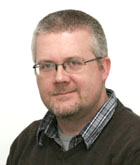
Jörg Strackbein (scientist) has expertise in multiple IT fields. He is involved in several research projects of the working group and responsible for technical aspects of databases, websites, intranet management and also for publication of dissemination materials, graphics and layout aspects.

Jelka Lorenz (Scientist) is responsible for the financial issues of the project coordination.

Institute: Department of Bioscience
The Department of Bioscience at Aarhus University comprises more than15 research groups and about 500 staff members and carries out basic research and strategic research as well as research-based consultancy services on all aspects of aquatic sciences. The groups in Silkeborg are particularly involved in catchments studies and its impact on and interaction with freshwater ecosystems.

Institute: Marine Research Division
AZTI-Tecnalia is a non-profit private research foundation, founded in 1981, focusing on marine research. AZTI has an impor- tant experience at international level, in implementing indicators, assessment tools and integrative methods, for the imple- mentation of European Directives, such as the Water Framework Directive and the Marine Strategy Framework Directive. Its main work is related to the sustainable development of the marine environment and its resources.
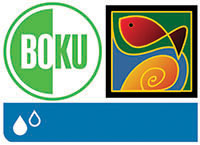
Institute: Institute of Hydrobiology and Aquatic Ecosystem Management
The institute’s research deal with the functions, processes, and structures of aquatic ecosystems and their environment with a focus on hydromorphological dynamics, nutrient cycles, food chains, habitat demands, biotic interactions, aquaculture and fishery. All disciplines (working groups Benthic Ecology and Ecological Status Assessment, Hydrobiology and Aquaculture, Fish Ecology, River landscapes and Aquatic Ecosystem Management, Biogeochemistry in Aquatic Ecosystems, Aquatic Ecosystem Analysis and Modelling) necessary for an interdisciplinary approach (biology, ecology, landscape planning, envi- ronmental engineering, statistics, modelling, system analysis, GIS, water management, law, history, geography) are repre- sented in the institute’s team.

Institute: Department of water quality, Hydrology division
National environmental agency responsible among others for surface and groundwater monitoring in national monitoring networks, flood forecasting, national water information system operation including GIS and assessments.
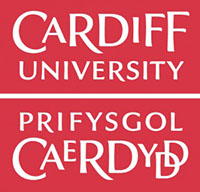
Institute: Cardiff School of Biosciences
Cardiff School of Biosciences is one of the UK’s largest university biology departments, and employs around 120 full-time faculty engaged across the whole range of life sciences. The School’s Organisms and Environment Division, with over 30 staff, is known for world-class research in freshwater ecosystems ecology, conservation genetics, environmental microbiol- ogy, parasitology and soil biology. Key current research includes the £3 million NERC-funded ‘DURESS’ project (Diversity in Upland Rivers for Ecosystem Service Sustainability.

DDNI is a governmental research body providing scientific support for the management of the Danube Delta Biosphere Re- serve (DDBR) and other wetland zones for biological diversity conservation and sustainable development. DDNI has enlarged and strengthened its expertise in the last years by attracting international donor funds for infrastructure and training and by participation in the EU research programmes. DDNI has selected in 2000 as Centre of Excellence for Deltas and Wetlands (FP5) and has consolidated its presence in ERA by its partnership in more than ten research projects under FP6 and FP7.

Institute: Freshwater Ecology and Water Quality Department & Groundwater Management Department
DELTARES is an independent institute for applied research in the field of water, subsurface and infrastructure, with about 600 people in scientific staff in a wide range of disciplines, hydrology, morphology, chemistry, ecology and socio-economy. It is frontrunner in the development and application of knowledge to meet the short- and long-term challenges in water management of vulnerable deltas, coastal areas and river basins. The majority of its projects are interdisciplinary to address the multiple interests in freshwater ecosystems and water resources management. Besides research activities on groundwater bodies, rivers, lakes and estuaries, DELTARES develops integrated software tools for supporting water managers and policy makers with the implementation of water related policies. Groundwater – surface water and ecological is one of main research areas.

Institute: Institute of Agricultural and Environmental Sciences, Centre for Limnology
The Institute of Agricultural and Environmental Sciences is the biggest institute of EMU, involving three Centers and 11 De- partments. The Centre for Limnology (CL) employs about 30 scientists. The group has developed methods and manuals for assessment of ecological status of lakes and rivers in Estonia and involved in several national and international projects.
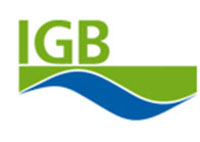
The Leibniz-Institute of Freshwater Ecology and Inland Fisheries (IGB) is part of the Forschungsverbund Berlin e.V. (FVB), the legal representative of IGB. IGB is the German Centre for ecosystem and process orientated, interdisciplinary basic and applied research in eco-hydrology, limnology, freshwater biodiversity, evolutionary biology, fish ecology and inland fisheries. It operates at the interface of basic and management-orientated research in limnology and management of aquatic ecosystems and inland fisheries. The researcher involved in this proposal developed a nutrient emission model for river basins (MONERIS), national assessment methods (PhytoFluss, Phyto-See-Index) and are coordinating and are involved in several national and international projects.
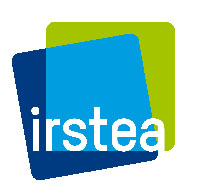
Institute: Department Freshwater systems, Quality and Pollution (QUASARE)
The QUASARE research topic is part of the “Freshwater systems, Quality and Pollution” Department and represent more than 95. Skill and expertise in bio-indication methods settlement and standardisation, hydrosystem ecological status assessment and restoration (rivers, lakes, reservoirs, estuaries) and modeling. Irstea is helping the French Environment Ministry for Water Framework Directive national implementation in surface freshwater and transitional hydrosystems. Participation in ECOSTAT methodological group and in European intercalibration works. National Reference Laboratory for hydrobiological bio-indication methods.
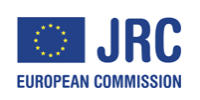
Institute: Institute for Environment and Sustainability
The JRC is a Directorate-General of the European Commission. Its mission is to provide customer-driven scientific and tech- nical support for the conception, development, implementation and monitoring of EU policies. As a service of the European Commission, the JRC functions as a reference centre of science and technology for the Union. Close to the policy-making process, it serves the common interest of the Member States, while being independent of special interests, whether private or national. The mission of the Institute for Environment and Sustainability (IES) is to provide scientific-technical support to the European Union’s policies for the protection and sustainable development of the European and global environment.

Institute: Limnology Laboratory, Biology Department
The Limnology Laboratory is offering research and training in various field of limnology throughout Turkey and is carrying out research on ecology of shallow lakes, impacts of eutrophication, climate change, hydrology (especially water level fluctuations) impacts on ecosystem structure and functions based on community structure. The methodological range includes space for time substitutions, mesocosms experiments, monitoring, paleoecology and modeling approaches.
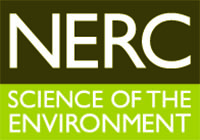
Institutes: Centre for Ecology & Hydrology (CEH), British Geological Survey (BGS)
The Natural Environment Research Council (NERC) is the UK's main agency for research in the environmental sciences. The Centre for Ecology & Hydrology (CEH) and the British Geological Survey (BGS) are two component research centres of NERC. CEH employs around 400 science staff and is the UK's centre of excellence for research in land and freshwater envi- ronmental sciences. Our work integrates a wide range of environmental science disciplines ranging from molecular ecology to whole Earth system science, including basic, applied and strategic research. The BGS is the United Kingdom's premier centre for earth science information and expertise, including groundwater resources. BGS employs around 450 science staff who undertake research in strategically important areas including natural resources, vulnerability to environmental change and hazards, and Earth System Science, often in collaboration with national and international scientific academic community.

Institute: Norwegian Institute for Water Research
NIVA is a national research institute covering freshwater and marine ecology, aquatic chemistry, and integrated water re- sources management. NIVA conducts national and regional aquatic monitoring programs; environmental information man- agement systems for water; pollution abatement strategies; impact and restoration of aquatic ecosystems including climate change; chemical analysis of water quality and hazardous substances; ecotoxicology; modelling of physical, chemical and biological processes and effects of eutrophication, hydromorphological changes, acidification and toxic substances. The institute has played a key role in the development and intercalibration of assessment systems for the WFD, and was a major partner in climate and WFD-relevant EU-funded projects such as REBECCA, EUROLIMPACS and WISER. NIVA is a key partner in the European Topic Centre on Water for the European Environment Agency.
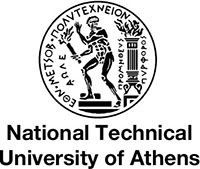
Institute: School of Civil Engineering- Laboratory of Hydrology and Water Resources Management
The lab’s research encompasses all aspects of the water cycle, including water policy and water resources management. The Faculty Members of the laboratory are teaching in 5 undergraduate courses at the Schools of Civil Engineering and Rural and Surveying Engineering, 7 postgraduate courses at the Inter-Departmental Postgraduate Courses (IPC) “Water Resources Science and Technology” and 2 courses at the IPC “Environment and Development”. Over the last 2 decades, the laboratory has successfully undertaken numerous national, international and European research projects on water resources and the environment. The Laboratory is equipped with modern technologies including PC Labs with extensive environmental modeling and GIS software, Experimental - Laboratory equipment, hydro-meteorological gauging stations, automatic meteorological stations in Attica (METEONET), a mobile van equipped for the measurement of hydrological parameters (hydraulic, hydro-meteorological, hydrogeological), as well as an Experimental Hydrological Basin where extensive monitoring is taking place in real time.
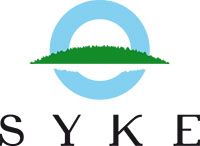
Institute: Freshwater Centre and Natural Environment Centre
The Finnish Environment Institute (SYKE) is both a research institute and a centre for environmental expertise of Finland. SYKE's research focuses on changes in the environment, and seeks ways to control these changes. Expertise is based on long-term environmental monitoring, wide-ranging research results, and highly-qualified staff. SYKE's research programmes assess environmental problems from a multi-disciplinary perspective, by integrating socio-economic considerations into sci- entific research. SYKE serves as the national centre for environmental data in Finland, and its' information systems are widely used for environmental monitoring, environmental modelling, forecasting and impact analysis. The key scientists have been involved in many EU/FP7 and national research projects, and have access to large databases and modeling systems.
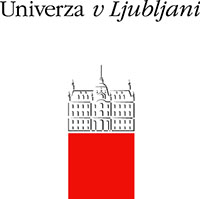
Institute: Department of Environmental Civil Engineering
The Department of Environmental Civil Engineering (around 48 staff) is part of the Faculty of Civil and Geodetic Engineering (around 230 staff), which in turn is one of 23 Faculties and 3 Academies of the University of Ljubljana. Main subjects cover hydrology, hydraulics, sanitary engineering, environmental protection, hydro power, river regulation, solid waste, waste water, eco-remediation, monitoring of environmental variables, databases elaboration, maintenance and querying, physical and mathematical modelling, SW development, expert work and more.
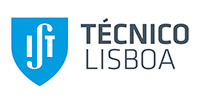
Institute: Instituto Superior de Agronomia (ISA) and Instituto Superior Técnico (IST)
The UTL team includes researchers from ISA, UTL’s Agronomy & Natural Resources school and from IST, UTL’s Technology & Engineering school, each of them the largest Portuguese institutions in their fields of expertise. The ISA group participating in the project has expertise on river and wetlands management and the IST group has expertise on ecohydraulics and ecosystem modeling. The research products developed by the UTL team have been intensively used to support the implementation of the Urban Waste Water Treatment, Nitrates and Water Framework Directives, including the definition of the indicators and indices presently used in the country to classify eutrophication and ecological status. The research team has been actively involved on consortium research having participated in about 3 tens of European research projects, having coordinated 4 of them and having produced about two tens of doctors and two spinoff com- panies. The open source MOHID modeling system has been downloaded more than 3000 times and is being actively used in more than 20 countries, being typically object of 4 courses per year.

APA is the government agency responsible for the development and implementation of environmental policies concerning air, water and soil in Portuguese mainland, under the Ministry of Agriculture, the Sea, the Environment and Spatial Planning. The mission of APA is to protect human health and the environment. APA's purpose is to promote public policies and sustainable development in collaboration with other public and private entities in order to ensure high level protection and valorisation of the environment and the provision of high quality services to citizens. To accomplish this mission APA has 800 valorisations, who cover a large range of specialist areas including hydrology, engineering, planning, ecology, chemistry, environmental regulation, quality control, communications, business support and management functions.
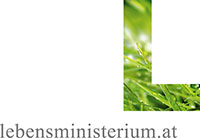
Institute: Division VII/1 National Water Management
The Division VII/1 of the Austrian Federal Ministry of Agriculture, Forestry, Environment and Water Management (BMLFUW) is responsible for the national implementation of the Water Framework Directive including inter alia development of national assessment methods, impact-pressure analysis, monitoring and development National River Basin Management Plan including Programmes of measures.

The Environment Agency is the environmental regulator in England and Wales. Of relevance to the current FP7 call, the EA regulates the water industry, water abstraction for drinking water, irrigation and industry, farms and water management sites. The EA has an annual budget (2011-12) of £1.1 billion (ca. 1.3 billion euro) and 11471 permanent staff with corporate targets including: ‘act to reduce climate change and its consequences’, ‘protect and improve water, land and air’, and specific targets related to ‘creating healthier river catchments’. For example in the last reported year (2011-12), the Environment Agency spent £10 million on catchment restoration, and £9 million on targeted catchments to help achieve good status for waters under the Water Framework directive. Additional projects on this latter initiative are planned until 2015 and aim to improve ca. 6,900 km of river and up to ca. 10 hectares of lakes, hopefully resulting in about 50 water bodies achieving good status by 2015.
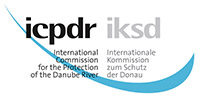
The Danube River Protection Convention (DRPC), which involved commitments of Danube countries to cooperate in water management came into force in October 1998. The International Commission for the Protection of the Danube River (ICPDR) is the organization established by Article 18 of the DRPC to implement the objectives and provisions of the DRPC. The fifteen contracting parties - 14 Danube States and the European Community (which have ratified the DRPC) - are the members of the ICPDR. The main objective of the Convention is the protection and sustainable use of surface and groundwater and riverine ecology, directed at basin-wide and sub-basin-wide cooperation with transboundary relevance. The ICPDR assesses the state of surface and ground waters in the Danube River Basin, develops actions to conserve or improve these waters, collects information on the implementation and progress of these actions and supports individual contracting parties or other relevant entities in the implementation efforts of these actions. From this, a range of activities can be derived. Particularly important ones include inter alia:
- implementation of the EU Water Framework Directive;
- implementation of the EU Flood Directive as well as the orchestration of basin-wide flood protection measures;
- Danube-wide assessments in the course of a “Joint Danube Survey” and through the Transnational Monitoring Net- work (TNMN);
- modelling of nutrient pollution loads that enter the Black Sea via the Danube;
- coordination to maintain an accident emergency warning system (AEWS) and risk spot inventories;
- efforts to define strict phosphate caps for laundry and dishwasher detergents;
- technology exchange in areas such as the construction or modernisation of wastewater treatment plants;
- maintenance of emission directories and GIS data management;
- implementation of measures to address hydromorphological alterations, nutrient pollution, organic pollution and hazardous substance pollution;
- promotion of fish passes where needed, protection of habitats and wetland restoration and cooperation with the network of protected areas (Danube Parks);
- dialogue with representatives from sectors affecting water such as hydropower, navigation or agriculture;
- adaptation to climate change;
- exchange on environmental issues and collaboration in Danube sub-basins such as the Tisza, Prut, Sava or Danube Delta.
At present, Austria, Bosnia and Herzegovina, Bulgaria, Croatia, the Czech Republic, Germany, Hungary, Moldova, Montene- gro, Romania, Slovakia, Slovenia, Serbia, Ukraine and the European Union are Contracting Parties to the DRPC.
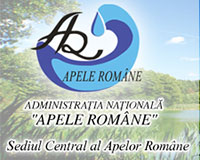
Institute: Department for River Basin Management Plans
The department has as main field activities: implementation of Water Framework Directive and other European Directives related to water resources (developing the national RBM Plan, surveillance of the implementation of the action plans for the European Directives), elaboration of Romanian contribution to the ICPDR Danube RBM Plan and Integrated Tisza RBM Plan, contribution to the implementation of the Marine Strategy Framework Directive. The Department for River Basin Man- agement Plans has developed the National RBM Plan, methodologies for implementation of WFD and other European directives assessment in relation to ecological status, significant pollution sources, impact of pollution and a modelling program for effect of measures applied at the water body level. The Department coordinated/contributed to several national and international projects.
